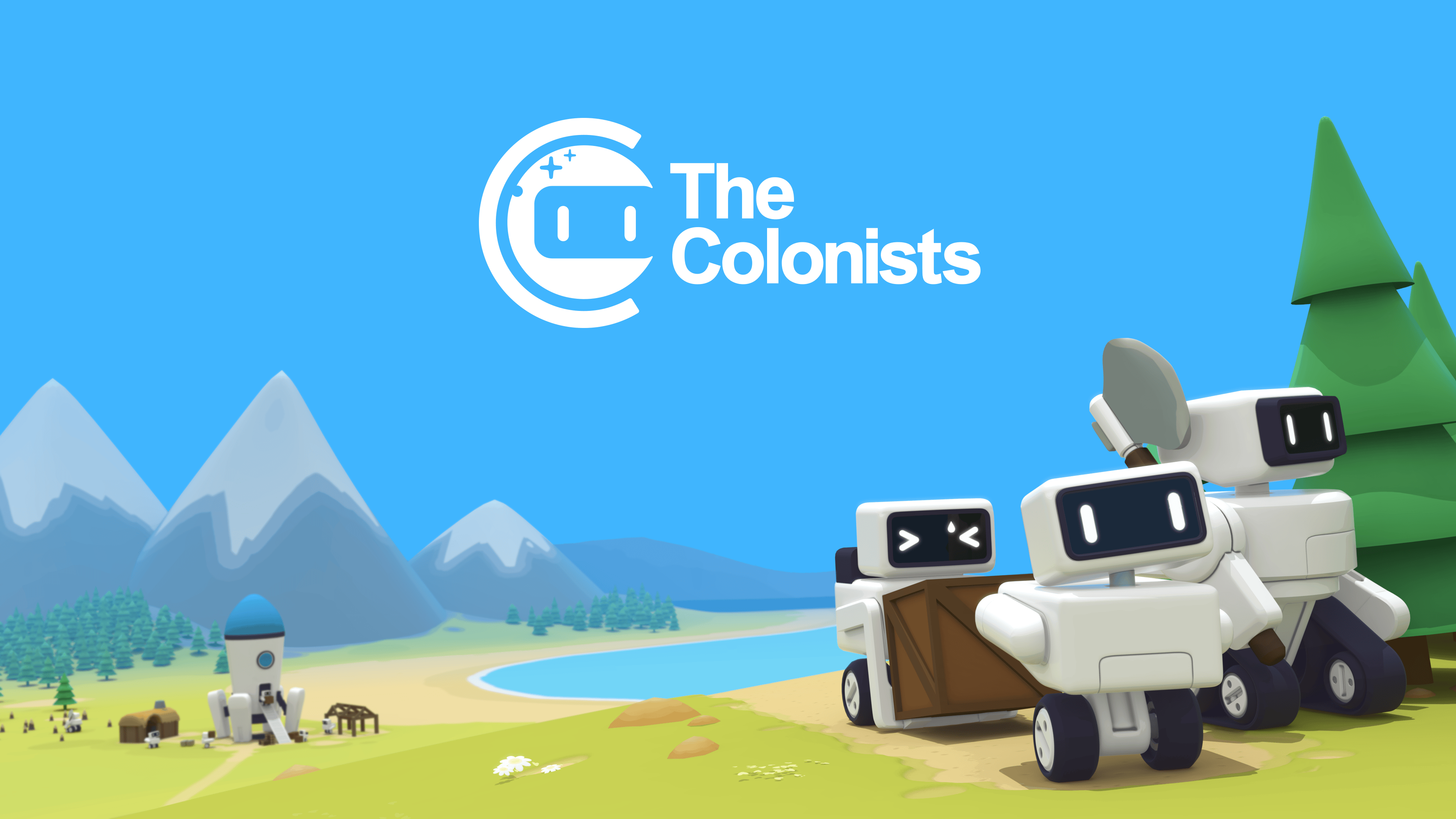Note: I haven’t actually played this in a long while (nothing against this particular game – I largely eliminated gaming my from life two years ago). I started writing this review several years back, and it sat in my drafts folder for a long time. I finally wrapped it up and published it in November 2023. Better late than never! The game is still very much available and still being quietly developed, so though the best time to get into it was years ago, the second best time is now.
I was a bit hesitant to try this game at first, based on the screenshots & videos. I was basically looking for The Settlers, of which I have many fond memories (from II & VII mostly). The Colonists, in comparison, looked a bit dinky, but I ultimately decided to take a chance, and I’m glad I did.
Gameplay
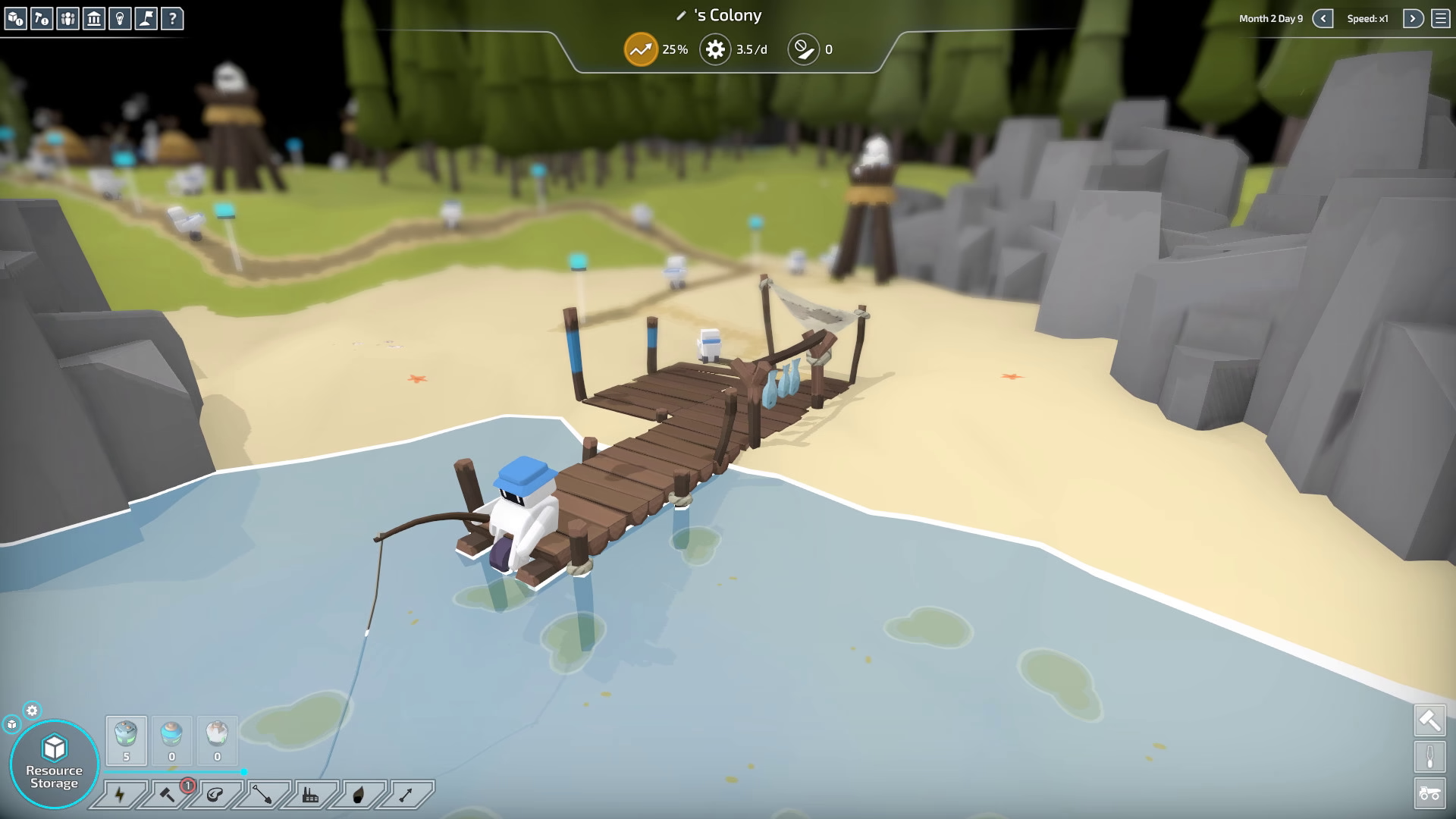
It’s generally a slow-paced game. It’s designed to be. Much of the experience is simply watching the robots go about their tasks, and appreciating the efficiency of your well-designed and well-oiled machine (or suffering the congested roads resulting from poor planning and choices).
You can boost the game speed manyfold if you wish, and if you play maps that include competing AI colonies there can a degree of time-sensitivity – build too slowly or carelessly and the AI might out-develop you and conquer your territory. Even so, this is not a twitch game – it rewards careful planning and paced development.
Surprisingly I play it at regular speed much of the time, despite the option to go faster. In every other Settlers-like I’ve ever played, I’ve always run them at the maximum possible speed. I think that speaks to how pleasant it is just watching all the little robots go about their business – no need to rush.
Each individual game can last anywhere from tens of minutes to tens of hours, depending on your preference. You can play aggressive competitive maps where you rapidly expand to conquer your enemies, always with that single clear objective in mind. Or you can play against the clock, trying to achieve a certain milestone(s) as fast a possible – e.g. accumulating a certain amount of gold, or completing construction of a monument. Or, you can just play with whatever agenda & pace you want, treating the game as your sandbox.
There’s also a variety of map sizes available, with which to further adjust your desired game length. Though the larger maps can be significantly more taxing on your computer, so although I typically like to play the largest maps, I found the experience better with smaller ones.
The “day to day” gameplay is very much in the style of The Settlers. Build first-level resource gatherers, then first-level manufacturers to turn those resources into more advanced resources, and repeat several times over in order to obtain the most advanced resources. There are several dozen different resource types, which can seem overwhelming at first but the progressive gameplay – centred on a tech tree divided into multiple levels that have to be slowly researched & unlocked – makes it much more approachable than you might expect, even for a complete beginner. After a few games the vast number of resource types, and their complex relationship graph, isn’t nearly as intimidating.
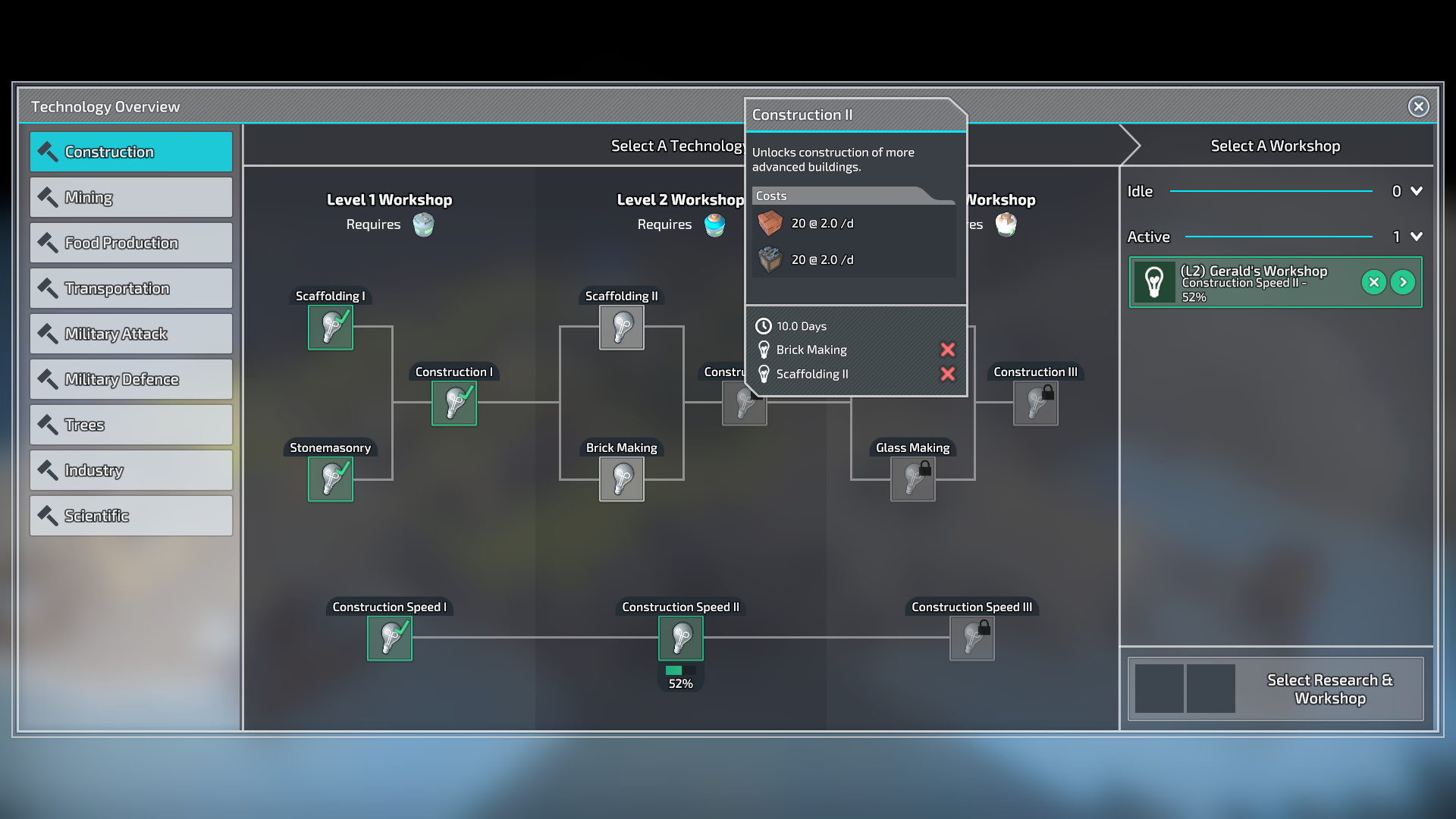
There’s significant fan-in as you go up the resource tree – producing the more advanced resources typically requires a vast network of dependent manufacturers & gatherers. And that’s where the core of the gameplay challenge emerges – logistics.
If you have a sleepy starter colony, with merely some basic resource gatherers and homes, then pretty much anything works so far as road & building placement. But as you build up, you run into the limitations of a two-dimensional space – you might need ten different fundamental resources feeding in, via successive layers of manufacturing, to one advanced building. Your roads – though upgradable – have finite throughput. Plan poorly and your distribution network will grind to a halt as bottlenecks form and poor overloaded roadbots fall hopelessly behind in their duties.
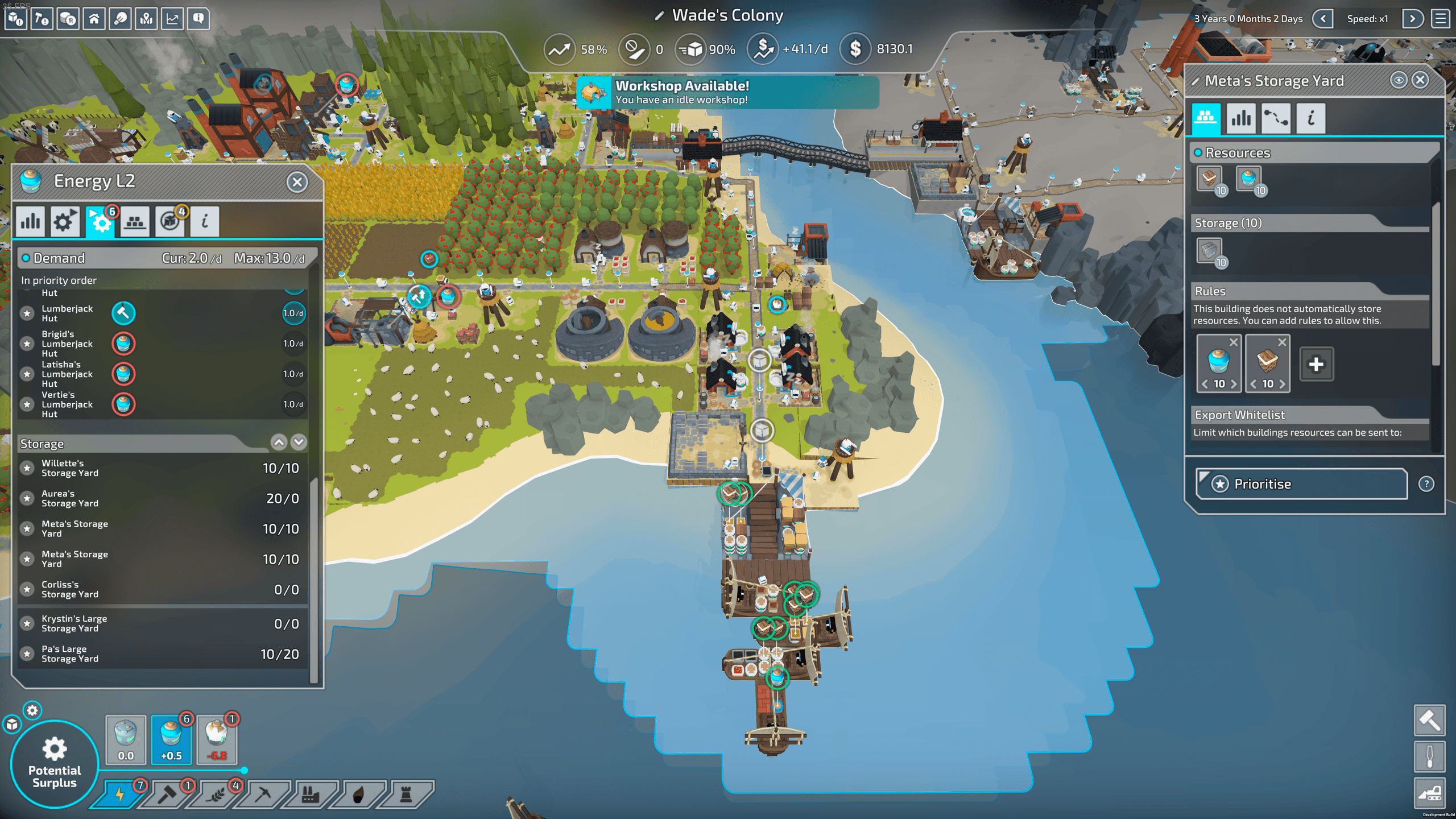
The game provides deep details of & controls over distribution – you can micro-manage which resources may travel where and by what routes. I generally found this less enjoyable than other aspects of the game, even though it’s nominally the heart of it – and certainly some folks may be as happy as a pig in the mud with the dizzying range of controls available. But at the end of the day, there’s only so much these micro-management controls can do to compensate for a poorly designed network, so you can’t avoid the need for thoughtful, large-scale design. I tended to utilise them only as a plan B, when the map truly required it or to compensate for poor choices on my part.
Missions & Maps
The game has a campaign that seems short on first impression, at not much more than a dozen missions (maps), but that actually represents many dozens of hours of game play. The missions are pretty varied and each endeavours to introduce something new. And once you complete them, you can move on to the map of the month or a plethora of player-created maps.
Pleasingly, after the first few tutorial missions it gives you the freedom to bounce around the missions partially out of order, and you can choose to ignore the combat ones entirely, or play the combat ones exclusively, or any mix of both. I enjoy both styles for their respective merits, but I like that it accommodates a range of player preferences.
AI
The AI is not particularly challenging, although it can surprise you sometimes – I haven’t won every game I’ve played.
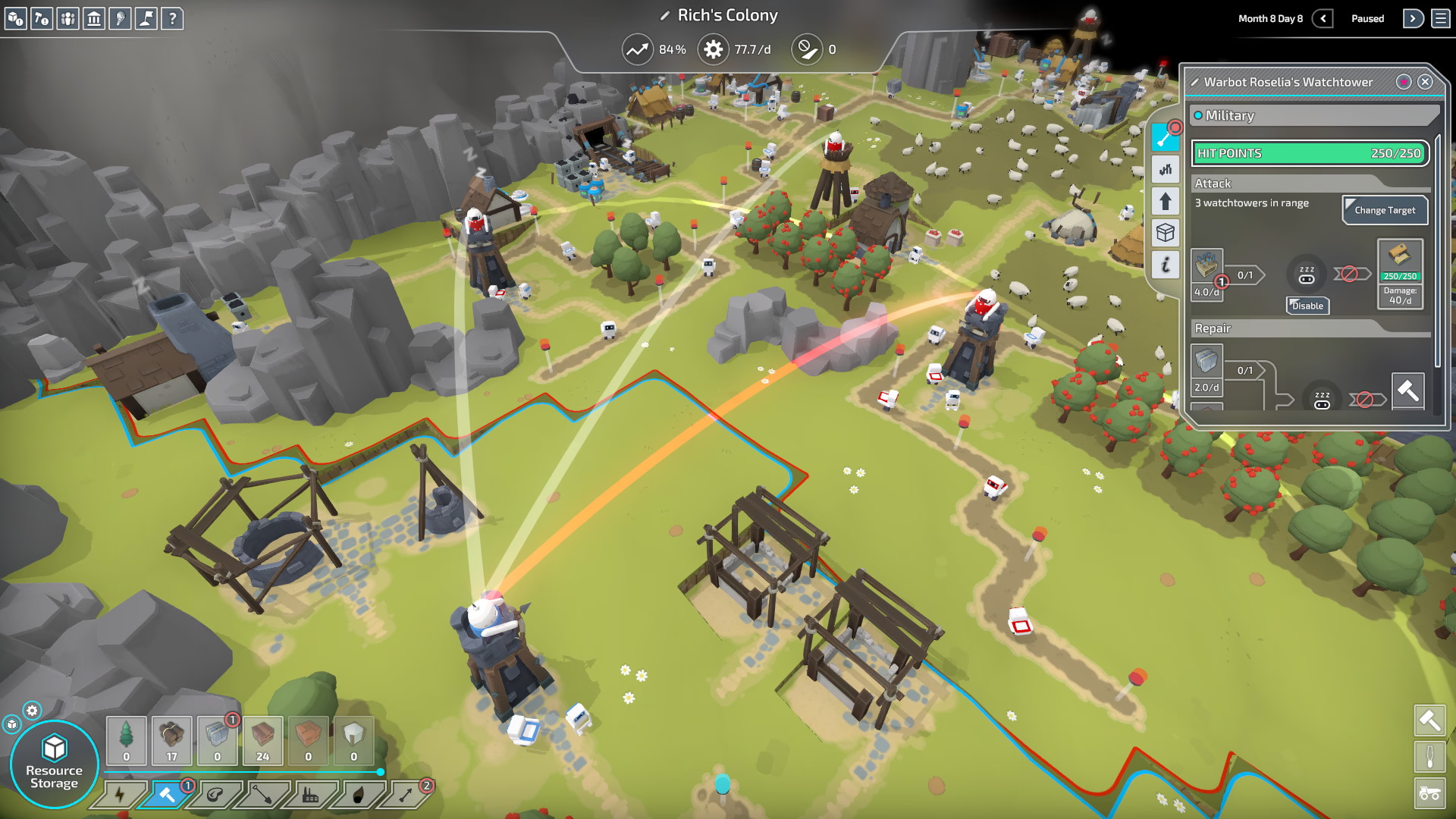
Unfortunately the AI is one part of the game that tends to be quite buggy. It’s improved a bit over the years as the game has been patched and evolved, but it’s never really been fixed. It’s all too common for the AI to just peter out mid-game, mysteriously halting its development and entering a state of stagnation. It’s then quite trivial to roll all over the AI – often it won’t even make a serious effort to defend itself or repair damage you cause.
Even when the AI is nominally working, it’s sometimes too easy to cripple it – conquer just the right part of its territory, disrupting its manufacturing network in a serious way, and it’s often incapable of working around the issue. Not because of fundamental constraints of the map, but because it simply makes poor choices in placement, and typically won’t delete buildings & roads in order to unblock itself.
On the – sadly somewhat rare – occasions when the AI does work properly, it’s quite fun to play against. Getting to a stage where you can actually exchange cannonballs with the AI can lead to some fun and challenging gameplay.
Technically you don’t have to play against competing AI colonies at all if you don’t want. However, I found it to be my preference – racing against the clock for arbitrary achievements, or playing in an open-ended sandbox, didn’t appeal so much to me. So these AI bugs might be a major detraction for you, or might be irrelevant, depending on your gameplay preference.
Visuals & Performance
The game looks much better in person – and in motion – than the videos & screenshots suggest. The art style is deliberately simplistic, but once you build a colony of any non-trivial size there’s plenty to see & enjoy. The animations are lovingly crafted, with each of the numerous bot types having its own moves and flair.
Don’t mistake the art style with being amateur. It’s well-refined. It’s also functional – the simplistic geometry produces distinctive building and bot appearances which make them easy to identify at a glance, and the colour scheme likewise serves double-duty as aesthetically pleasing and functional.
The music and sound-effects have a matching aesthetic, and the net effect can be very zen-like.
At first, when you have just your colony ship, the game appears very empty. But as you build up your colony, detail fills in – inevitably what looked like a spartan blank canvas of a map turns into a bustling town, full of activity.
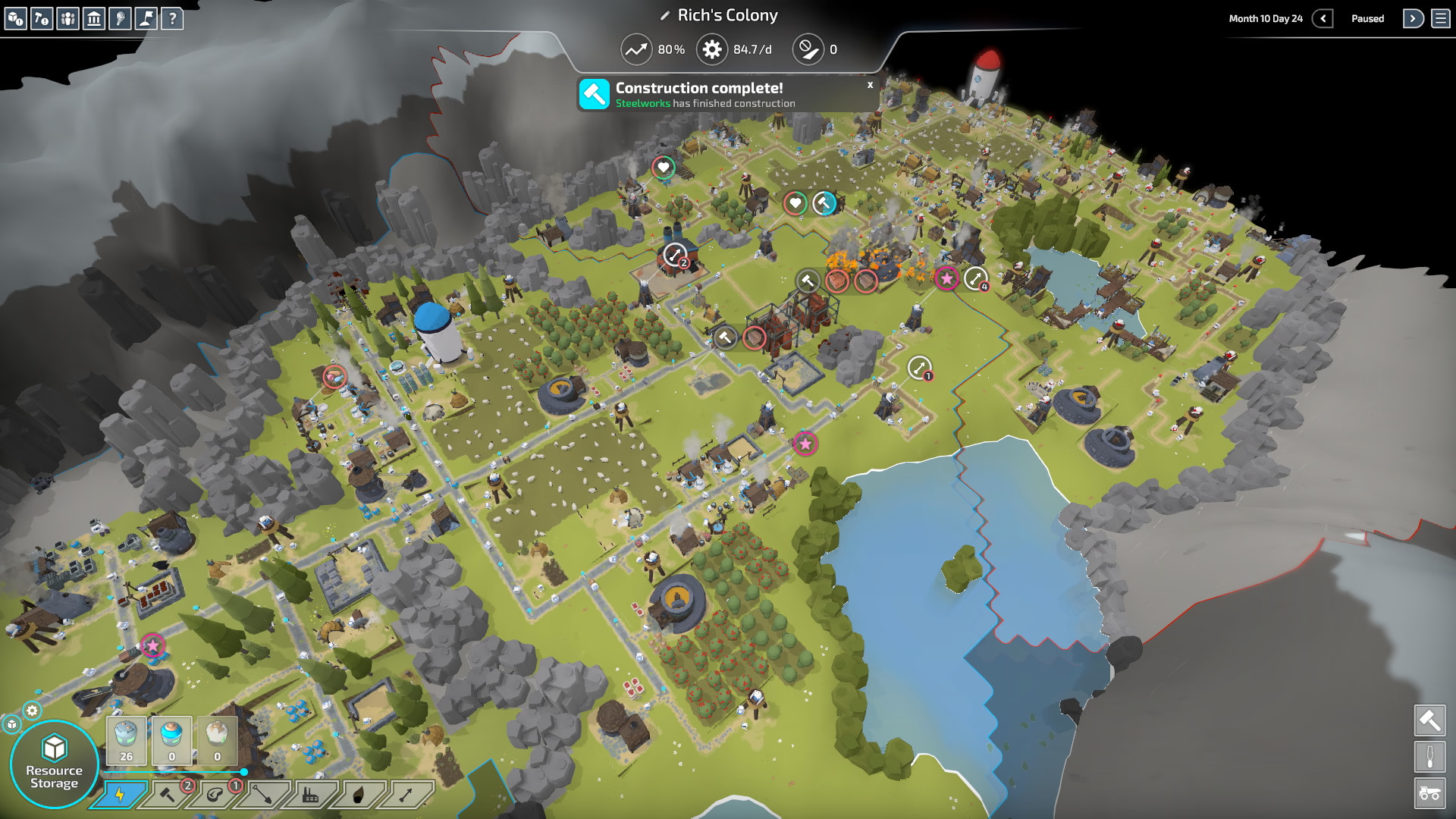
On a 10-core iMac Pro with Vega64 GPU, The Colonists sort of runs at native (5k) resolution. It tends to bog down a bit – frame rates dropping into the teens – with large maps or large colonies. This is largely independent of other graphical settings. I typically played it at quarter resolution (2880×1440) to avoid this (and to enable me to turn all other graphics settings to their maximums without having to worry). That gave me 20+ FPS most of the time. That might not sound like much, but you don’t need high frame rates – this is not an action game.
Bugs
In earlier versions of the game, on older versions of macOS, I experienced significant bugs relating to the GPU – major rendering errors, and complete, hard lock-ups of my computer.

The game uses Metal by default, Apple’s proprietary 3D library. Metal has long been buggy – this is not The Colonists fault. I often experience hard locks-up with many programs that utilise Metal (or similarly OpenCL).
Though, over many macOS releases Metal has very slowly become somewhat less buggy. Monterey finally fixed some of these issues, making it the first macOS release on which the Metal version of The Colonists was actually playable, and though I haven’t tested Ventura or later with The Colonists, it’s quite possible further bug-fixes have trickled in since.
The game likely also works more reliably on Apple Silicon, where Apple pays more attention to their GPU drivers.
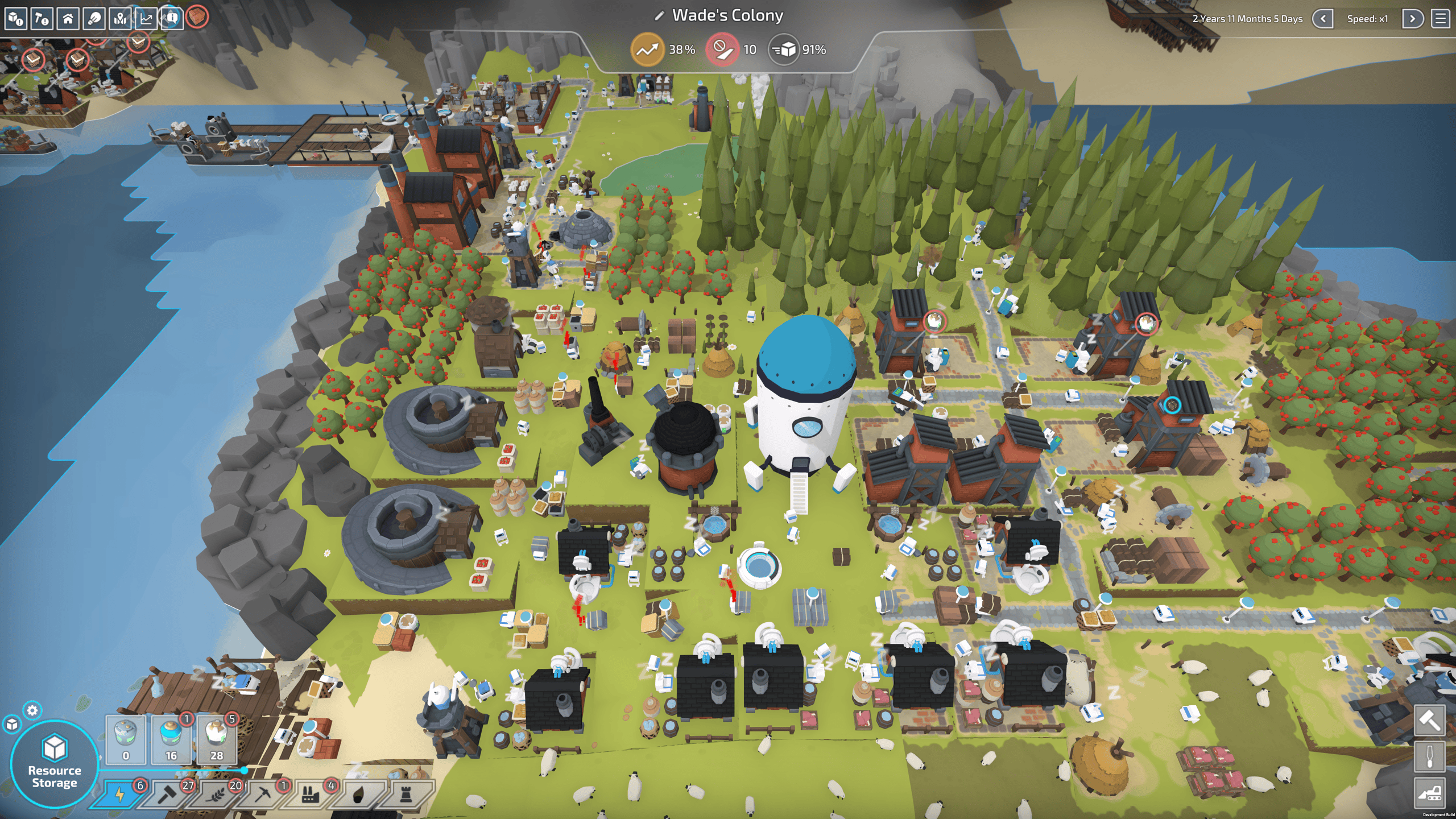
The game’s author very graciously spent a lot of time working with me to debug these issues. Unfortunately there’s nothing he or I can do about Apple’s buggy GPU drivers, so for a long time the only workaround we could come up with was to switch the game to using OpenGL. That addressed all the rendering issues, eliminated the crashes, and boosted the game’s frame rate substantially.
Unfortunately, I don’t know that there’s an OpenGL option anymore – and it was never officially supported by the author, it’s merely a checkbox option that Unity provided which the author was able to utilise trivially but without “warranty”.
The Colonists is literally a one man production. Richard Wallis created the whole thing. It’s been a work of many years. It’s an impressive accomplishment.
I want to reiterate how impressed I’ve been with Richard, as he worked very patiently with me to narrow down the rendering & freezing issues, and to generally address bug reports. His customer support has been fantastic.
Should you buy it?
Yes.
For so many reasons. It’s a relatively rare, almost unique game style (especially on the Mac since Ubisoft retroactively pulled modern The Settlers games from the platform). It’s produced by essentially one person as a labour-of-love indie game. It’s beautiful and soothing and satisfying.
It has some bugs – and suffers significantly from Apple’s bugs in Metal and macOS more generally – but if you can just stomach those a little bit, you can probably look past them and enjoy what this game offers.
It’s available on a wide array of platforms – macOS, Linux, Windows, PS4 & PS5, Xbox, and Nintendo Switch. (the website also suggests there’s an Android version, but I can’t find it in the Google Play Store) For Mac, you can grab it through Steam or GOG, for $25 USD.
Notably there’s also a Discord server for the game, which is moderately active with players and frequented by the game’s author. Provided you can put up with the dumpster fire that is the Discord app.
